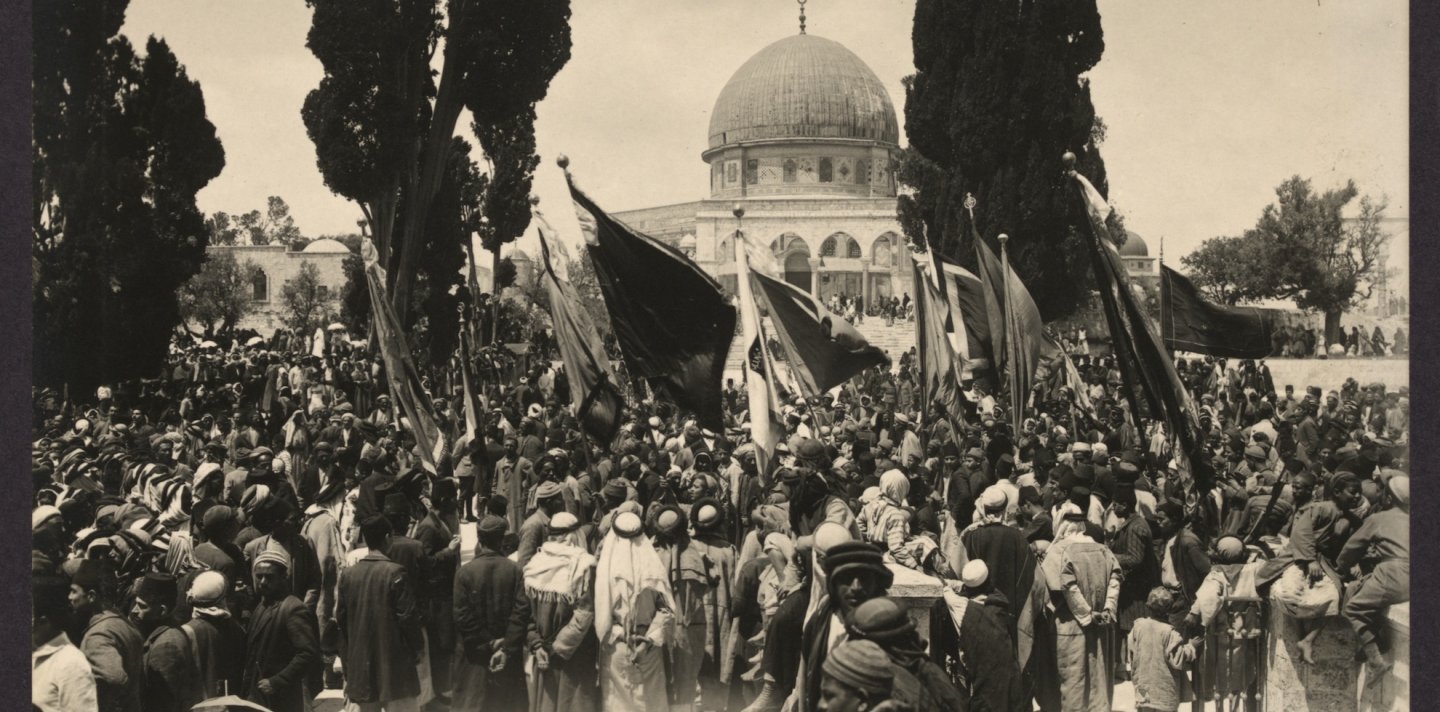The diaries of Wasif Jawharriyeh, a young musician close to Jerusalem’s notable families, provide a fascinating glimpse of shared social events, feasts, and festive events in the late Ottoman period. He writes that without the city’s religious holidays, “people would have succumbed to gloom, particularly in the days when they lived inside the wall.” 1
Jawharriyeh, also Christian Orthodox, details the Greek Orthodox Festival of Our Lady Mary. Fasting families would pass the first 15 days at a shrine on the eastern side of Jerusalem underneath the olive trees. Evenings were spent drinking and singing, and friends and relatives came to visit. During the day, people went to work, returning later for the festivities. On the day of the feast, a parade led by an army band and Jerusalem’s political and religious officials marched through the streets, while the patriarch distributed stuffed lamb to all. But Jawharriyeh writes that this Christian religious celebration was also attended by Muslims.

